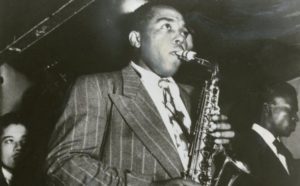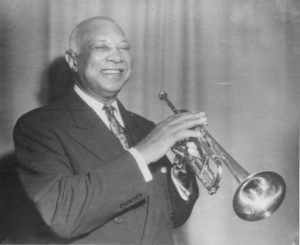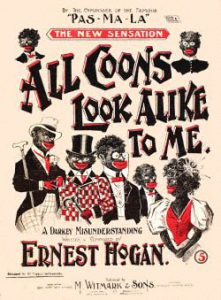
“Coon songs” with their ugly name, defined ragtime for the masses and played a transitional role in the commercial ascendancy of blues and jazz. Coon songs presented to be a stereotype of black people.
Ragtime, a popular style that featured syncopated. It is mostly known today as a style of piano music, but in the late 19th and early 20th centuries, the term also encompassed the ensemble music and songs. African American musicians and performers moved beyond minstrelsy and made artistic innovations, starting with ragtime. White audiences around the country responded enthusiastically. Ragtime became popular culture during the 1890s. By the early 1900s ragtime flooded the music publishing industry.
Ernest Hogan, who is the first African American to produce and star in a Broadway show, “The Oyster Man” (1907). He is best known for his innovations in music helping popularize Ragtime. Hogan made an 1896 hit named, “All Coons Look Alike to Me.” He then lifted the cakewalk rhythm from unknown backroom musicians and lifted the title from a line he heard sung, “All pimps look alike to me.” His variation tapped into the strong currents of racism in the U.S. and gave rise to a whole new sub-genre of ragtime called “coon songs.” A glut of coon-themed songs flooded the market after his smash hit.
Coon songs spoke volumes about white attitudes towards African Americans. Unfortunately, in many cases, they also spoke volumes about some black composers’ sense of personal pride and self-image. They are a historical document that clearly shows white attitudes and the oppressive social world that African Americans had to cope with. Coon songs tend to reinvent the archetypical antebellum “Zip Coon” as a black urban dweller whose primitive nature is both revealed and disguised by clothes and habits. Whereas the old “Zip Coon” satirized pretentious, effete eastern socialites, the new coon represented backward blacks who wanted to impress with ostentatious speech, dress, and jewelry. Earlier coon songs of the 1880s and 1890s often portrayed blacks cutting one another with razors over games of chance. Sheet music covers often portrayed blacks wearing top hats, tailcoats, and watches on chains. Ragtime made the “Zip Coon” the most recognizable character in American music by 1900.
Coon songs aimed to be funny and incorporated the syncopated rhythms of ragtime music. Coon songs contributed to the development and acceptance of authentic African American music. Ragtime and coon songs were enjoyed by African Americans as they reflected the full gamut from conservative to liberal attitudes.
Sister Sledge is an American musical vocal group from Philadelphia

Tye Tribbett is a grammy nominated and award winning gospel artist.

Charlie Parker was an american jazz saxophonist and composer.

W.C. Handy was known for “Father of the Blues”.

Ragtime and The Coon Song presented a stereotype of black people.
The Fisk jubilee singers has made a major impact of representing Negro Spirituals and their school.

Login to your account